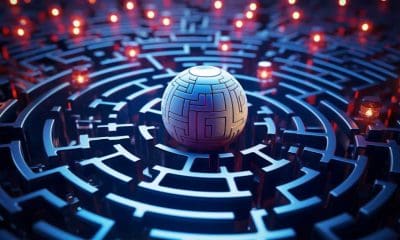Technology
Meet Laika: The AI-Powered Robot Pet for Astronauts


An Ideal Companion in Space
We all know that life in space can be lonely, which is why astronauts may benefit from having a pet with them. While having real animals in space is not feasible, a robot pet powered by Artificial Intelligence (AI) could be the next best thing. Introducing Laika, a robot designed to be as life-like as possible and provide companionship to astronauts during their space travels.
Designed to Be Friendly and Functional
Named after one of the first animals in space, Laika is a robotic dog that goes beyond the capabilities of existing models. Unlike other robotic dogs, Laika is specifically designed to be a more friendly and beloved companion for astronauts. In addition to providing companionship, Laika can also assist in emergencies and monitor the health of those on board the space vehicle.
Equipped for Space Conditions
Made from robust titanium, Laika is built to withstand the extreme conditions of space. It is equipped with various sensors, including thermal imaging, depth cameras, slam cameras, and ultrasonic sensors. These sensors enable Laika to identify objects, people, and even literal space. It also features ECG sensors to monitor the health of astronauts, especially during times of heightened emotions.
Future Improvements and Possibilities
Future improvements to Laika include the addition of mixed reality glasses, which will provide users with real-time information about their "pet" and its activities. The renders of Laika show a friendly-looking dog, making it a much-welcomed companion for astronauts who may be missing their actual pets or in need of companionship. Laika even has a stretchable handle on its back, allowing users to carry small items or move it around. Furthermore, Laika can also be utilized in non-space situations, such as domestic contexts.
With Laika, astronauts may find solace and companionship in the form of an AI-powered robot pet during their space travels. As technology continues to advance, the possibilities for integrating robots into various aspects of our lives, both on Earth and in space, are becoming more and more exciting.


Hello! I’m Roger Jenkins, your go-to source at ReportingTheNews.com. I’m a USC graduate who combines journalistic precision with a Trojan’s passion. Based in sunny Los Angeles, my days are filled with more than just sunshine; they’re about capturing stories that resonate.
Beyond the newsroom, I’m an avid triathlete. Swimming, cycling, and running are more than just sports to me; they embody my commitment to discipline, focus, and a healthy dose of competition.
My love for travel takes me far and wide. Guadalajara, with its vibrant culture and unforgettable tacos, has a special place in my heart. I’m always searching for the next great story or a hidden culinary treasure.
At home, Nala, my energetic pet, is my constant companion. Together, we’re known in our neighborhood for our morning runs and evening strolls.
I’m driven by a belief in the power of storytelling to unite communities. Join me as we explore impactful narratives and stay updated with the latest news. You’ll also get a peek into my sports passions and travel escapades.
Want to get in touch? Follow me on Instagram for more insights and updates.



